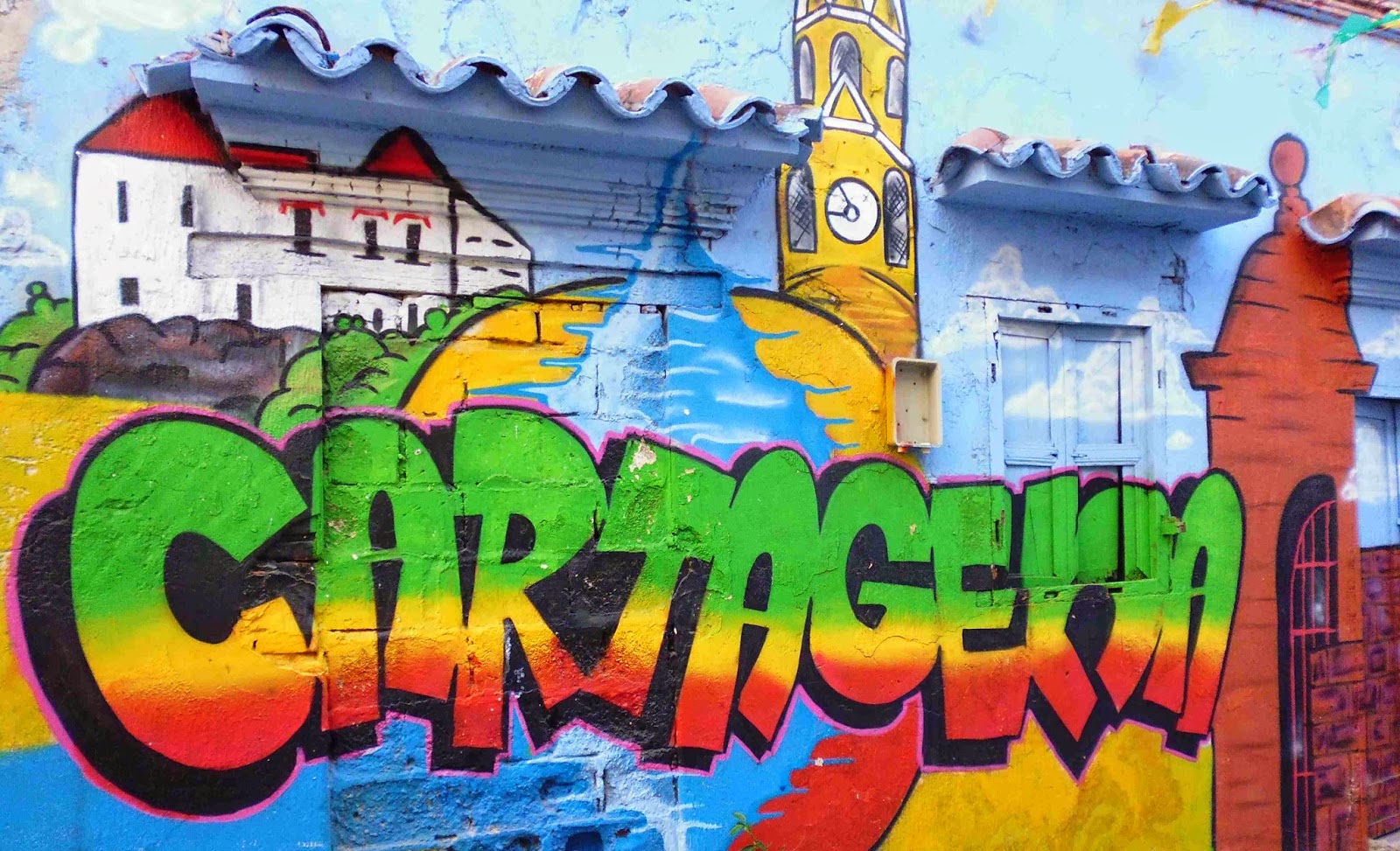 |
| Colourful Cartagena |
 |
| Chilling on the city wall |
 |
| Cartagena City Wall with locals escaping the heat |
 |
| It´s not Panama but hats are still for sale! |

Luckily I found a cool part of town called Getsemani - a few years ago it was a dangerous place to visit but as the historic centre has become more Disneyfied this area has rejuvenated with authentic plazas, boutique shops, good restaurants and amazing wall art



 |
| Getsemani Murals |
A few days later I arrived up the coast in Santa Marta - another colonial town - however the real draw here is the Cuidad Perdita - the Lost City of the Tairona tribe
 |
| Senso at the beginning of the trail |
The trek there and back is lovely - with easy trails, amazing jungle and mountain scenery and if you get hot there´s always a nice cool river to relax in.





 |
| Beautiful scenery on the trek |
 |
| River crossing - in the rainy season it´s up to your waist! |
| Back in a hammock! |


Camp Visitors!!
Discovered in 1972 Ciudad Perdida consists of a series of 169 terraces carved into the mountainside, a network of cobbled pathways and several small circular plazas.
The entrance can only be accessed by a climb up some 1,200 stone steps through dense jungle. In the early years of 2000 it was a dangerous hike - not due to the steepness of the trails but due to the risk of kidnappings
 |
| Climbing the steps |
 |
| The Lost City! |
 |
| Senso and his family survey the Sierra Nevada |
Senso was from the Wiwa tribe - one of 4 different tribes in the area. What he is wearing is the traditional way of dressing. An essential piece of kit for Senso was his Poporro
 |
| Senso holding his Poporo and showing the coca |
In the Sierra Nevada mountains dried coca leaves are consumed by the Kogi, Arhuaco and Wiwa tribes. The poporo bulb contains a powdered shell substance that is taken in the mouth and chewed with the coca leaves - this enables more effective release of the stimulant. The stick is then rubbed against the outside of the Poporro in a very medatitive way - almost like a comfort blanket effect.
 |
| Dried Coca leaves |


Coca is still grown in these areas but in small quantities for traditional use - they carry the dried leaves around in a small woollen sack. When meeting friends it is common to exchange coca leaves as a sign of comradeship
On the trek we met many members of another tribe - the Kogi - their village was on the side of the track
 |
| Kogi Village |
 |
| Kogi villager riding out |
The only slightly scary thing on the trek was when a scorpion dropped from the roof of the camp onto my neck - I brushed it away thinking it was a fly and was surprised to see what landed on the ground! "Muy peligroso" commented Senso - not that it would have killed me - a sting would have made me nauseous and shaky for about 24 hours - so I was glad to avoid a sting!

Back in town I hopped on the night bus towards Medellin. - Bogota may be the capital but Medellin really is the soul of Colombia....
Comments? Questions? Suggestions? email me at iain.mcallister@googlemail.com